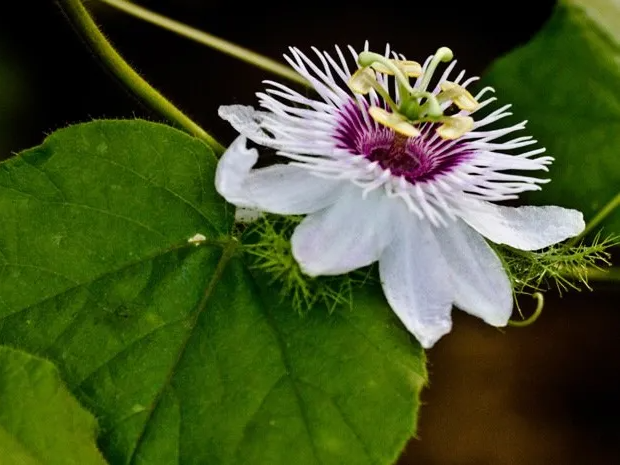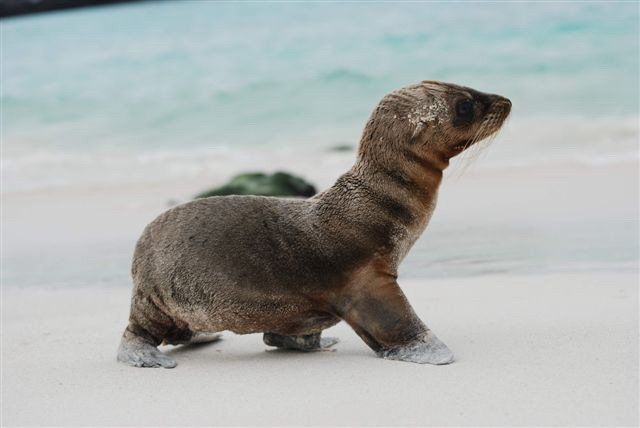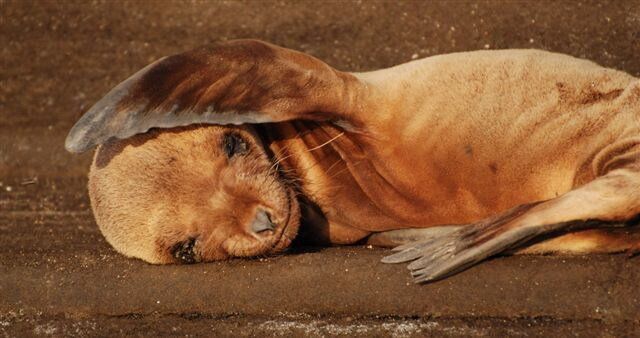SUPERLATIVE SOUTH AMERICA
Naturally and Culturally – Exciting!
It's easy to be mesmerized by all that South America has to offer.
Discover majestic waterfalls, dense Amazonian jungles, tropical beaches, unparalleled cuisine, friendly people, wildlife both fascinating and mysterious, and stunning scenery – just some of the reasons to visit this unique continent on one of our socially and environmentally responsible tailor-made journeys.
Watch enormous chunks of blue ice calve off city-sized glaciers; hike in the Andes Mountains and ride out with Gauchos on a working ranch; visit ancient colonial settlements and cosmopolitan cities; taste delicious wines on both sides of the Andes; stargaze in the world’s driest desert and search for caimans in the wetlands; and then there’s the music – feel the rhythm of the Tango and the Samba as you delight in your South American journey.
Said one client: "Thank you for your thoughtfulness in planning our vacation to Chile and Bolivia. It was the most challenging, awesome and informative travel experience ever." More>>
TRΛVELBOECKER TΛILOR-MΛDE - Our journeys are uniquely designed to match your personal vision.
We tailor-make journeys to these fascinating South American countries:
-
ARGENTINA - Patagonian Glaciers, endless Pampas and cool Cities
Argentina is a vast and varied land, studded with outstanding natural wonders and endowed with one of the world’s hot-list cities. Far below the equator, near the bottom of the world, Argentina summons travellers with a blend of sleek, urban style shaped by a turbulent history and flavoured by renowned wines and cuisine.
From the Tropic of Capricorn to the tip of Antarctica, Argentina encompasses a staggering diversity of terrains, from lush wetlands and bone-dry Andean plateaux to the end-of-the-world archipelago of Tierra del Fuego.
Its most well-known landscapes are the verdant flatlands of the Pampas and the dramatic steppe of Patagonia, whose very name evokes windswept plains inhabited by hardy Gauchos.
Argentina offers something for every visitor. Not everyone dances the tango, is obsessed with Evita or gallops around on a horse!
Don’t be surprised if you find yourself longing to return to explore the areas you didn’t get to see on your first visit.
Argentine Republic:
• Area: 2.791.810 km² (including Malvinas Islands, other South Atlantic Islands and part of Antarctica). Argentina is the second largest country in South America and the eighth in the world. At its widest it is some 1.425km across and stretches 3.800km from north to south.
• Capital: Buenos Aires
• Currency: Argentine Peso
• Climate: There are seven climatic regions, varying from the tropical northwest, the temperate Pampa to the cooler temperatures in Patagonia. Since Argentina lies in the southern hemisphere, their seasons are opposite to those in the northern hemisphere.
• Population: 45 Million, of which 85% are of European descent
• Official language: Spanish is the national language. English, French and Italian is widely spoken.
• Time: GMT -3
Argentina is located in the extreme south of South America. The country’s trump cards are its sheer size and diversity.
• Cities – Buenos Aires, the country’s capital, is a fascinating place for sight-seeing, shopping, cosmopolitan dining, and its unique atmosphere. Other cities worth visiting are colonial Salta, stylish Rosario – the birthplace of Che Guevara – and Ushuaia, the world’s most southerly city with a fabulous waterfront setting on the Beagle Channel.
• Wildlife – you could spot howler monkeys and toucans in northern jungles or watch the antics of penguins tobogganing into the icy South Atlantic. Pumas, armadillos, llamas, foxes and tapirs roam the country’s forests and mountains and Argentina’s hundreds of bird species include the Andean condor and three varieties of flamingo.
• Scenery – the dizzying heights of the Altiplano, Puna grasslands, lush winelands and tea plantations, parched salt-flats, palm groves, icebergs, plus the mighty Iguazu waterfalls are just some of the vistas that will entice you to stay a while.
• Activities – beautiful ranches known as estancias or fincas are the perfect base for a range of outdoor adventures such as horse-riding, trekking, whitewater rafting, kayaking, skiing and hang-gliding. More relaxing pursuits include wine tasting, bird-watching or photographic safaris.
Buenos Aires is a cosmopolitan and dynamic city. It offers a rich cultural, historic and architectural heritage built by generations of Spanish, Italian, German, Russian and many other immigrants. The “Porteños” are stylish, urban, and friendly people who make the most of their city.
Buenos Aires is a blend of Tango, coffee shops, theaters, antique dealers, art & crafts markets, museums, galleries, and gastronomic delights.
Our tailor-made city stays may include:
• visits to the Antique Shops in San Telmo, the colorful La Boca and the trendy Palermo neighbourhoods
• Buenos Aires Tango Show or a Milonga night
• Football Matches and Polo Games
• Buenos Aires by Helicopter or by Bicycle
• delicious Argentinian steak at a typical Churrascaria
• drive along the Parana River and visit the Tigre market & museum
• guided tour of the historic Colon Theatre
The wineries of Mendoza lie in the beautiful foothills of the Andes Mountains, an ideal area for grape cultivation and wine production. Many of Argentina’s finest vineyards are found here and visitors are warmly invited to try the fruit of their labour.
The city of Mendoza is an oasis amid a desert-like high plain. Just 5% of the province is cultivated, the rest is a desert landscape, receiving 8 inches of rain per year. To combat the low levels of rainfall, Mendoza has developed an intricate system of aqueducts, dykes, and irrigation canals. As one travels through the region one is often surprised by the greenery of the tree-lined streets of Mendoza city, and the vast expanses of vineyards in the outlying wine country.
Winds from the Pacific Ocean travel over the Andes Mountains and descend into the plains of Mendoza blowing a dry, warm heat into the province. The annual average temperature is 32ºC (90ºF) in summer and 10ºC (50ºF) in winter, making it an ideal destination for sun-seekers and travellers looking to enjoy the open air.
Our tailor-made experiences may include:
• Overnight in a relaxing hotel, situated amidst a vineyard
• Visits to various wineries, including cellar tours and tastings, where you may design your own wine blend
• Biking along the wineries
• Excursion to the high peaks of the Andes
• Evening gastronomy tour “The Skies of Mendoza”
• Epicurean delights, with reservations at a Michelin-star restaurant and meals at the chef’s table
Is a trip to Argentina on your wish list? Ask us to tailor-make a unique journey for you.
-
BRAZIL has it all – from the deep Amazon to the wild Pantanal
Discover tropical beaches, dense rainforests, ancient colonial settlements and bustling cities, wildlife safaris, varied and exquisite cuisine, adrenaline-filled adventures, year-round warm weather, friendly and attractive people, fascinating history and local culture, and sheer variety of exceptionally stunning scenery – just some of many reasons to visit this unique country.
The largest country in Latin America, Brazil covers an area comparable to that of continental USA or Europe, making it a land of diverse landscapes and climates. This diversity is echoed by her inhabitants, descendants of the world’s greatest melting pot: Amerindian, European, African, and Oriental peoples have together created an amazing wealth of different cultural traditions, folklore, and cuisine. Their legendary passion for football, the colour and exuberance of carnival and the famous warmth and hospitality of the Brazilian people will inspire you to relax and join in the celebration of life.
Brazil by regions:
Coastal Treasures – Brazil’s 7,491km-long coastline boasts some of the most stunning tropical beaches in the Americas. Countless coves and bays with crystal-clear tropical waters shelter an astounding array of idyllic beaches, each with its unique charm. Why not stay awhile on a densely forested archipelago surrounded by palm-fringed beaches and coral reefs, or explore charming historical towns overlooking the Atlantic Ocean, such as Salvador…
Salvador – Brazil’s first capital sits on a peninsula overlooking the Bahia. For Brazilians, Bahia is synonymous both with a more relaxed pace of life and a special intensity in all that Brazil represents: colour, music and religion. 80 percent of the inhabitants are Afro-Brazilian and are very proud of their roots. The best Capoeira (a Brazilian martial art) of Brazil is found in Salvador, whilst Candomblé, the Afro-Brazilian religious sect, permeates the city.
The old town center hosts a wealth of Baroque churches and colonial-style architecture. It is also the focus of Salvador’s famous and exuberant nightlife with countless restaurants, bars and nightclubs and forms the splendid backdrop to carnival celebrations that are more lively here than anywhere else in Brazil.
Rio de Janeiro – One of the worlds’ most famous and beautiful cities, Rio de Janeiro exceeds even the greatest of expectations and is a city that has to be seen to be believed. From its two famed peaks, the Sugar Loaf and Corcovado Mountain, atop which stands the statue of Christ the Redeemer with outstretched arms, Rio de Janeiro is truly “The Wondrous City”, her spectacular landforms embracing sandy beaches, glittering bays, fine residential districts and towering forest-covered mountains. The landscape is so dramatic that even the largest areas of modern high-rise are still dwarfed by the overwhelming grandeur of numerous peaks and the largest urban tropical forest in the world, itself a monument to environmental preservation.
Iguassu Falls – Iguassu means “great river” in the indigenous Guarani language and there could hardly be a more fitting name. After rising in the Brazilian highlands near Curitiba, the Iguassu river runs westward on a 1,100km journey, receiving some 30 tributaries on its course to the plateau where, just before merging with the great Paraná river, it plunges thunderously over an 80m high cliff in virgin forest.
The Iguassu Falls are the most spectacular in South America. A total of 275 falls cascade over a precipice that is 3km wide, sending up an endless wall of spray laced with rainbows. Iguassu is also the meeting point of three countries: Brazil, Argentina, and Paraguay. Straddling the Iguassu River, the twin National Parks of Foz do Iguassu were set up to preserve the region’s precious rainforest environment.
Amazonia is the largest region of Brazil and perhaps the most internationally famous. The Amazon is also the largest area of tropical rainforest in the world, having become a worldwide synonym of biodiversity. However, in relation to the rest of the country, it is sparsely populated and includes vast areas that are virtually inaccessible, despite countless attempts at taming the jungle through agriculture, industrial development and farming.
In the Amazon, and especially along the Amazon River, there are numerous Jungle Lodges located in magnificent spots from which you can enjoy various fascinating guided excursions. Most accommodation of this type provides a rustic, yet luxurious ambience surrounded by the vast Amazon Rainforest.
The Pantanal is a vast wetland area in western Brazil formed by the Paraquay river, which cuts across the states of Mato Grosso and Mato Grosso do Sul (as well as western Brazil and northeastern Paraguay). There are two distinct seasons: the dry season from July to October and the wet season from December to March, when seasonal rains swell the Pantanal’s main arteries and marshlands, temporarily inundating the hardened landscape, transforming it into a lush wetland area mottled with pools and lagoons. Each year, a myriad of creatures eagerly await this life giving phenomena and emerge as the floodwaters soak into the crusted landscape. During this period, the Pantanal’s surface area increases to a staggering 200.000 km². Quite appropriately therefore, in past times the Pantanal was locally termed Xaraés, meaning inland sea.
The Pantanal is one of the world’s great wildlife reserves, providing habitat for over 650 species of birds, (among which, the stately tuiuiu or jabiru stork, íbis, the Hyacinth macaw, emu and Toucan), 250 species of fish and 80 species of mammals (Capibara, tapir, giant anteater, giant otter, howler monkey and Jaguar are all common resident species). Other species include anaconda and caiman.
Bird watching – Combining Brazil’s natural and cultural highlights with an active bird watching program, TRAVELBOECKER ADVENTURES creates an unforgettable trip that will inspire amateur and highly experienced bird enthusiasts alike.
Toucans, macaws and the majestic Tuiuiu stork are just some of Brazil’s strikingly colourful bird species awaiting the enthusiast.
Want to explore Brazil? Contact us to curate a a unique journey for you.
-
CHILE & PATAGONIA - Land of Deserts, Glaciers & Volcanoes
Sometimes called the longest country in the world, Chile is squeezed between the Andes Mountains and the Pacific Ocean. It is never more than 180 km (112 miles) wide, but its coastline extends over 4,300 km (2,672 miles).
Among the top attractions in Chile are stargazing in the Atacama – the world’s driest desert, spectacular scenery of Patagonian glaciers and fjords, and the many volcanoes along the Pacific “ring of fire”.
Chile by regions:
Atacama Desert: Desert, Archaeology and Starry Skies
Northern Chile is home to the world’s most arid desert and its salt flats, hot springs and geysers as well as large deposits of copper and other minerals in the altiplano. It also boasts fertile ravines and oases, whose unique fruits make for excellent culinary tours.
This area is inhabited by some of the country’s native peoples and both Incan and Spanish influences can be seen in its villages and religious festivities. Areas like San Pedro de Atacama allow you to view valuable vestiges of native cultures at archeological sites and museums. While the burial rites of mummification are often associated with Ancient Egypt, the mummies of the Atacama’s Chinchorro culture are the oldest in the world and can be seen in the San Miguel de Azapa Archeological Museum in Arica.
Coastal cities like Arica, Iquique, Antofagasta, Coquimbo, and La Serena will delight you with their beaches and warm, temperate climate.
During the winter months in the desert the temperature can drop as low as 7ºC at night, although daytime is a comfortable 26ºC on average.
Near Copiapó, the desert becomes fertile thanks to the camancha, a mist that rises from the sea and allows fauna to bloom in impressive natural reserves like the Pan de Azúcar and Fray Jorge National Parks. Here you’ll also find some of the country’s best wine and pisco valleys.
Northern Chile is also home to a third of the planet’s telescopes, with more than 300 cloudless nights a year. The most impressive astronomical observatories – Cerro Paranal and the Alma Project – confirm the region’s status as a land of magical discovery.
Santiago, Valparaíso and Wine Country
Santiago – The city’s first-rate dining and hotel offerings, bohemian neighborhoods and business districts make it a year- round destination. As soon as you land in Santiago, you will notice the city’s heady mix of influences and attributes.
This ancient valley nestled in the Andean foothills and around the Mapocho River was discovered by Spanish conquistador Pedro de Valdivia in 1541.
It has since become a major South American city that offers first-class hotels and restaurants and access to the latest technology and services. The Chilean capital is the perfect starting point for any visitor.
Santiago offers much more than one might anticipate. Here, ancient traditions coexist with 21st century life on every street and in each neighborhood. You’ll find everything from small cafés with Wifi, exclusive boutiques, great bookstores and fine handicrafts to big malls that offer all of the top brands. This metropolis, which is home to over six million people, offers hundreds of options for every budget or interest and activities that can be enjoyed throughout the year.
The Central Coast The beaches of the Pacific Ocean lie just 120 km from Santiago. As summer arrives, city dwellers’ minds turn to the beach, and Valparaíso and Viña del Mar are just a little over an hour away by car.
Valparaíso is known for its brightly colored houses, bohemian culture, and beautiful seaside views. Built on dozens of steep hillsides overlooking the Pacific Ocean, Valparaíso boasts a labyrinth of streets and cobblestone alleyways, embodying a rich architectural and cultural legacy.
Chile’s Central Valley offers visitors a chance to explore beautiful Andean foothills, traditional villages, handicrafts and of course the vineyards. Wine is a delight and Chileans know a thing or two about this particular source of pleasure.
Imagine yourself on an old train that chugs past huge expanses of vineyards. You have a glass of fine wine in your hand and singers croon old melodies. This daydream becomes a reality in the Colchagua Valley, one of Chile’s most representative wine tourism destinations.
The Central Valley is nestled between the Andes and the Coastal Mountain Range and is crossed by the rivers that make their soil so fertile and perfect to grow wine grapes, which were originally brought over from Europe in Colonial times. In the late 1970′s, Chilean wine producers began to use modern technology to make the country one of the New World’s leading wine exporters.
Experts and sommeliers are on-hand at most local wineries to guide you through your experience of the bouquets, flavors, and body of these fine wines. Each spring brings Chilean Independence Day (September 18), which is the perfect time to enjoy harvest celebrations in the Central Valley with a nice glass of Chilean wine in hand.
Patagonia, where breathtaking views await you at the end of the world!
It is described as exotic, remote, vast, infinitely beautiful, wild and untamable. And it is easy to lose yourself in this area, which is roughly the size of Britain (240,000 km²) but has a less than one inhabitant per km².
Over 50% of Chilean Patagonia is a protected wilderness area. Here, it’s just you and the untamed nature that serves as a backdrop to such diverse activities as fly-fishing, trekking, cycling, mountain climbing, rafting, kayaking and horseback riding.
The region is vast – ice fields give way to majestic glaciers and the splendour of mountains like Torres del Paine, San Valentín and Cerro Castillo. You’ll be dazzled by the colour and scale of General Carrera and O’Higgins Lakes, the vigor of the Baker, Palena and Futaleufú Rivers and the huge maze of fjords and canals that are home to dolphins and whales.
In this rugged and beautiful landscape you will find cities and villages like Coyhaique, Punta Arenas and Puerto Natales, which are home to gauchos and centuries’ old ranching traditions.
Los Pingüinos Natural Monument near Punta Arenas is home to more than 120,000 Magellanic penguins, who migrate here annually in September/October to mate. By the end of March the penguins have returned to sea again.
The Islands
Chile’s territory includes hundreds of islands, but the two that are most popular with travelers and easiest to visit are Easter Island and Robinson Crusoe Island, located 3,700 km and 500 km respectively, from the mainland in the middle of the Pacific Ocean.
Easter Island, or Hanga Roa as it is called in the local indigenous language, is one of the most exotic places in Chile. Its indigenous culture has been admired for erecting massive stone monuments called Moais. These stone statues are over 800 years old and are scattered over a volcanic landscape surrounded by beautiful beaches.
Tepito Ote Henua (“The Center of the World”), as the people who lived there once called it, is the most remote inhabited island on the planet. No other landmass is as isolated, which gives it an aura of mystery. The island was home to a complex culture that fell into disarray due to food shortages and the tribal warfare that ensued. But its spirit lives on in its people, language, clothing, music, dance, crafts, and food.
Robinson Crusoe Island, part of the Juan Fernández Archipelago, was hit hard by the tsunami of February 2010. Much of its municipal and hotel infrastructure is under reconstruction, but you can still enjoy the warm hospitality of its 500 inhabitants, who colonized the island over a century ago.
Is a trip to Chile and Patagonia on your list? Get in touch - we'll design a fabulous journey for you.
-
PERU – home of Machu Picchu, the Amazon, colonial cities and archaeological sites
Peru is a country of many dimensions and exciting adventures. Travel back in history as you visit the cultural centers of the pre-Columbian civilizations, enjoy modern Lima, and ponder the mystery of futuristic Nazca.
From the sacred citadel of Machu Picchu to the wildlife-rich Amazon rainforest, Peru’s dramatic scenery, living culture and world-class cuisine make it a unique destination.
Thanks to the legacy of powerful ancient civilizations, Peru is home to over 5,000 archaeological sites, many of them still shrouded in mystery. Travel back in time as you explore the cultural centers of Inca civilizations and enjoy colonial towns alive with customs, fiestas, and costumes.
Peru is also synonymous with nature and offers great biodiversity. It is home to more than 1,800 species of birds and 10% of the reptiles, mammals and fish on the planet.
A paradise for those who are passionate about exploring, Peru offers a wide range of activities from trekking across the Andes to tasting the great range of gastronomic delights in Lima’s renowned restaurants.
Republic of Peru:
Peru, located on the west coast of South America is its third-largest country. The country borders Ecuador, Colombia, Brazil, Bolivia, and Chile and its 11 ecological regions are found in 3 main zones – the coast, highlands and the Amazon rainforest.
• Area: 1,285,216 km²
• Population: 33+ million
• Capital: Lima
• Currency: Peruvian Nuevo Sol
• Languages: Spanish, Quechua, Aymara
• Time: GMT -5
Getting to Machu Picchu:
While in Cusco make sure you leave plenty of time to explore this city, which dates from around 1200 AD and is the historic heart of Incan civilization. Wander the network of ruined temples and palaces, and learn of the Incas´ ancient religious practices, centered in the majestic Temple of the Sun. Just as fascinating is the colonial history of Cusco-see how the Spanish built their lavish churches on the sites of the Inca temples.
Machu Picchu, the Lost City of the Incas, is one of the wonders of the Americas. The stunning ruins of the ancient citadel, perched on a mountain peak high in the Andes, are perhaps the greatest surviving testament to Inca civilization. Built in the 15th and 16th centuries, Machu Picchu was the secret city of the Incas, never discovered by the Spanish. It was only rediscovered in 1911, by an American, Professor Bingham, and it remains South America’s most spectacular archaeological site.
Cusco - Machu Picchu - Cusco by train
The train journey from Cusco to Machu Picchu is a highlight of any trip to the Andes. The scenery is simply spectacular, and the recently refurbished Vistadomes with their panoramic windows allow you to enjoy it in comfort.
The 3 ¼ hour journey takes you through a changing landscape. First there is a steep climb out of Cusco into the surrounding hillside, by means of a series of switchback turns known locally as “the zig zag”.
Soon the train stops at the beautiful village of Poroy, and then descends into the Sacred Valley, passing by lush, green fields and colourful villages in the foothills of the Andes.
From here on, there are wonderful vistas of the mountains and, deep in its dramatic canyon, the beautiful Urubamba River running through the Sacred Valley.
For optimum views of the Andes, windows have been installed into the carriage ceilings. Also, a newly enhanced food-and-drink service, plus individual slip-down tables have been added. And what a destination awaits you!
Intrigued by Peru? Ask us to customize a unique journey for you.
TESTIMONIALS

“Thank you for your thoughtfulness in planning our vacation to Chile and Bolivia. It was the most challenging, awesome and informative travel experience ever.”
Dagmar & Robert, Vancouver BC

“Christine and her TravelBoecker team never cease to amaze our family. Our South American adventure exceeded the expectations of myself, my husband and kept our 7-year-old son excited.”
Shawna, Vancouver BC

“Christine knows her stuff! She made me feel taken care of from the very start and I always felt confident and excited about my big adventure. Just what I wanted from someone who was putting together a big trip for me as a solo female traveller to another continent. Thank you!”
Christine, Vancouver BC












